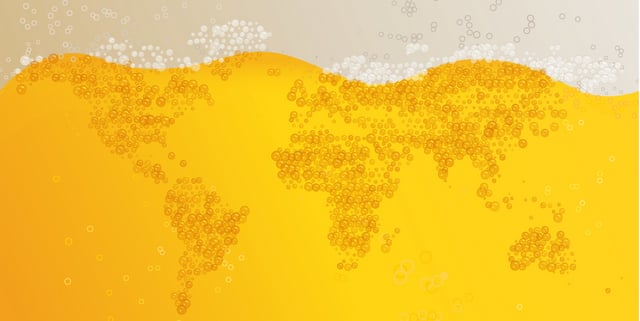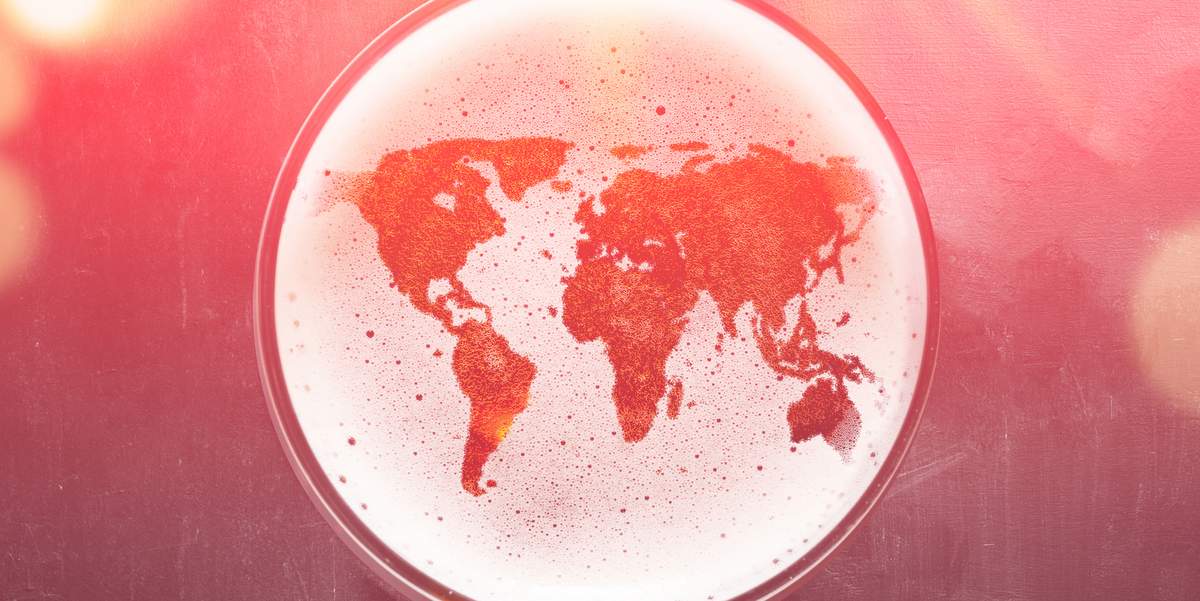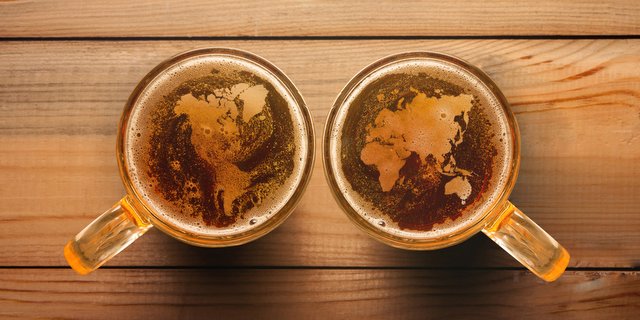
Over the last 40 years, IWSR has built up one of the world’s largest databases on the beverage alcohol market. Sometimes it share that global perspective with us. According to IWSR’s latest data release (this is 2016 data, but released on May 30, 2017), the consumption of alcoholic drinks is declining at an increasingly faster rate than has been previously reported by other data companies. For 2016, the IWSR reports that the global market for alcoholic drinks shrunk by -1.3 percent, compared with an average rate of just -0.3 percent in the previous five years. The reasons for the accelerated downward trend include a faster decline in beer, a reversal of trends for cider and slowing growth for mixed drinks.
Cider declined by -1.5 percent after years of solid growth. The markets responsible for this reversal of trends were South Africa, which saw decline following a period of growth, and especially the United States, where volumes collapsed by -15.2 percent after years of double-digit growth.
Global beer declines accelerated in 2016, with the category down -1.8 percent, compared with a five-year rate of -0.6 percent. The global trend is a reflection of developments in three of beer’s largest markets: China, Brazil and Russia, which all saw steeper declines than in previous years, declining at -4.2, -5.3 and -7.8 percent respectively in 2016.
Global spirits grew by 0.3 percent. Vodka is dragging down overall spirits performance, declining at -4.3 percent last year. Volumes were boosted by gin (+3.7 percent), tequila (+5.2 percent) and whiskey (+1.7 percent). The negative trend in vodka is largely due to steep volume losses in Russia (-9.3%), which nevertheless remains vodka’s largest market by far. Key growth markets for total spirits last year were China, the United States and Mexico.
Wine was flat overall (-0.1 percent), with sparkling wine growing at 1.8 percent and still wine down by -0.5 percent. This is roughly in line with the trend of the previous five years. Widely seen as the most accurate source of beverage alcohol consumption trends, the IWSR does however predict improving fortunes for the total global drinks market, with consumption forecast to increase by 0.8 percent until 2021. Whiskey will be one of the main growth drivers as volumes are expected to grow by 650m liters by 2021.
Global consumption of mixed drinks is expected to increase by more than 400m liters over the next five years, while sparkling wine is likely to add more than 220m liters. Beer is also forecast to show strong growth in many Asian and sub-Saharan Africa markets.
U.S. total beverage alcohol adds 22.4 million nine-liter cases in 2016
In February, IWSR released preliminary 2016 beverage alcohol category growth results as part of the 2017 US Beverage Alcohol Preview, available exclusively to IWSR clients in advance of the IWSR’s annual global data release in May. Preliminary results show that total beverage alcohol consumption in the United States increased by 0.7 percent in 2016 to reach 3.4bn nine-liter cases. Last year’s addition of 22.4m nine-liter cases was double that of 2015 when total beverage alcohol grew by 11.2m nine-liter cases on a 0.3 percent growth rate.
The IWSR says overall trading up, or premiumization, and consumer thirst for US whiskey, American-made “craft” brands, sparkling wine and Mexican beers continues to drive segments within the beverage alcohol space.
Spirits
In 2016, the distilled spirits industry achieved its 19th consecutive year of volume growth as it ended the year up by 2.3 percent at 216.4m nine-liter cases. Whiskey continued to outperform the industry growing by 4.4 percent while the non-whiskey segment under-performed slightly advancing volumes by 1.5 percent. The top five leading brands by volume, in order, are: Smirnoff, Bacardi, Jack Daniel’s, Crown Royal and Captain Morgan. Both Bacardi and Captain Morgan volumes continued year-over-year declines, but growth brands like Fireball and Tito’s rose rapidly.
Wine
In 2016, wine achieved its 22nd consecutive year of volume growth as it ended the year up by 1.7 percent at 357.4m nine-liter cases. Interest in still wine drove the addition of 4.5m nine-liter cases on a 1.4 percent growth rate over the previous year. The category that captured the most consumer attention was sparkling wine which increased by 8.1 percent adding 1.6m nine-liter cases last year. Three of the top five leading brand volumes declined (Franzia, Carlo Rossi and Sutter Home) amid the trend of consumers trading up to more premium-priced (over $10.00) products.
Beer and cider
The beer industry achieved its third consecutive year of volume growth in 2016 reaching 239.4m
hectoliters. Imported beer, specifically from Mexico, is leading the volume growth for the industry. The craft segment has posted a single-digit increase for the first time in this decade due to the category hitting a maturation point. Other domestic offerings struggled to gain consumer interest as each of the remaining categories posted declines. Four of the top five brands are domestic beers in decline (Budweiser, Coors Light, Bud Light, Miller Light) while Corona’s growth signifies the Mexican beer trend. The cider category skyrocketed the past three years reaching an all-time high of 2.7m hectoliters in 2015 only to fall by -11.6 percent last year.
Mixed Drinks
Defined by the IWSR as malt, spirit or wine-based ready-to-drink products, the mixed drinks category advanced by 7.8 percent to reach 10.2m hectoliters in 2016. The ‘Rita phenomenon is a thing of the past as consumers have turned their attention to hard sodas and spiked seltzers in addition to more premium spirit-based prepared cocktail offerings. Last year, Mike’s Hard Lemonade regained the top spot and continues a positive growth trend.





Leave a Reply
You must be logged in to post a comment.